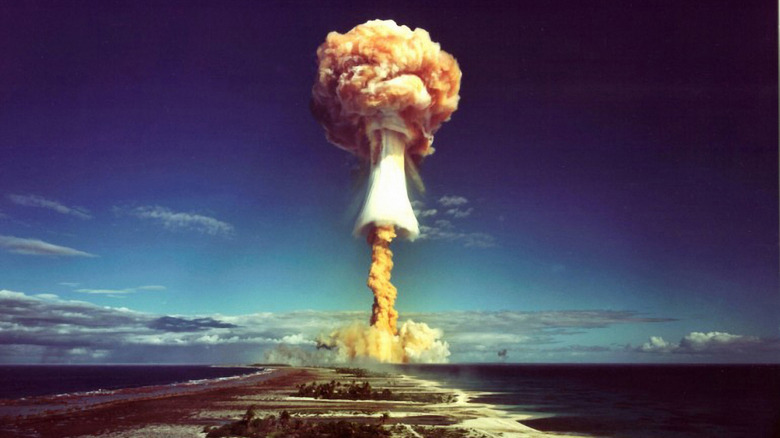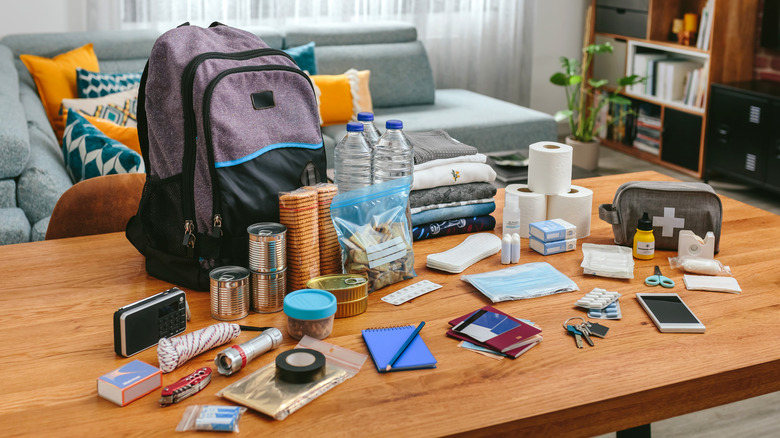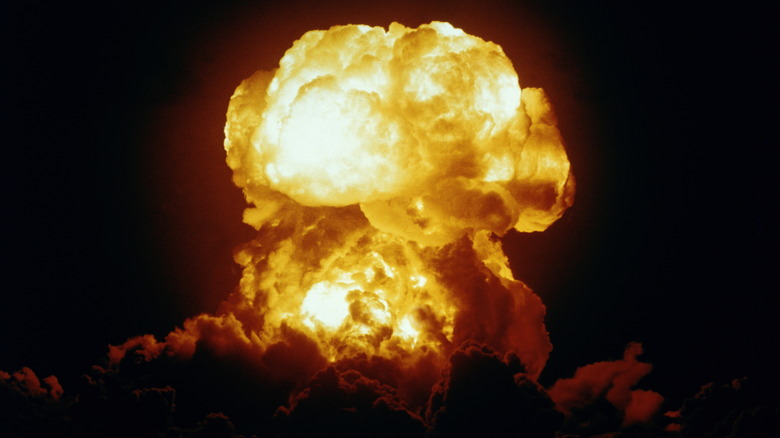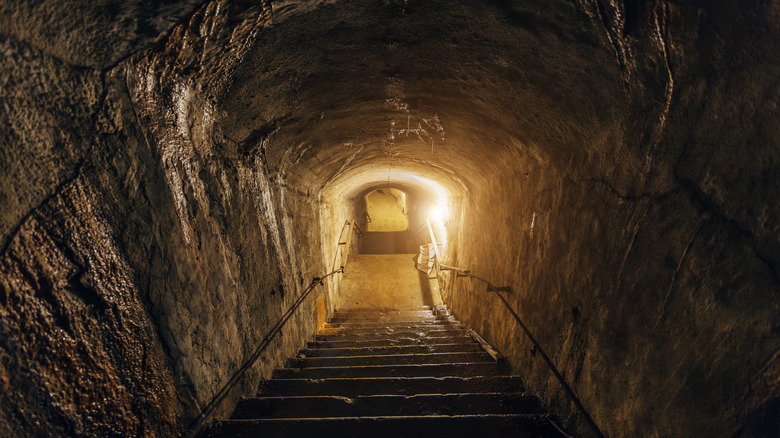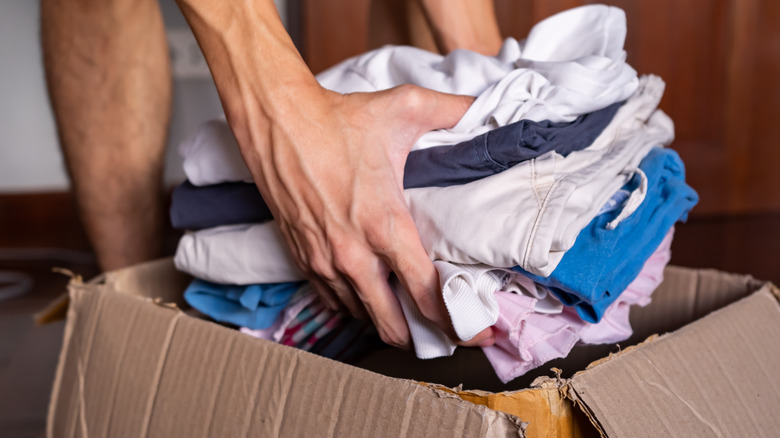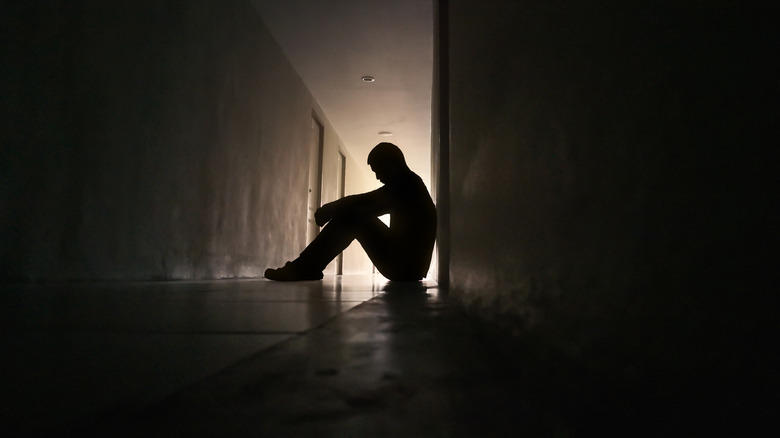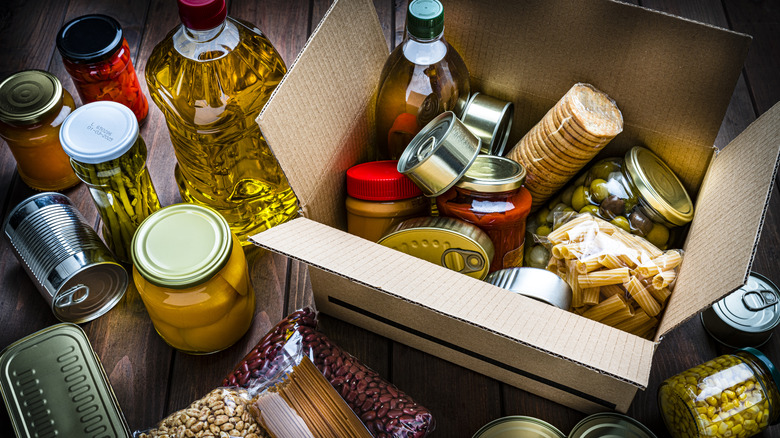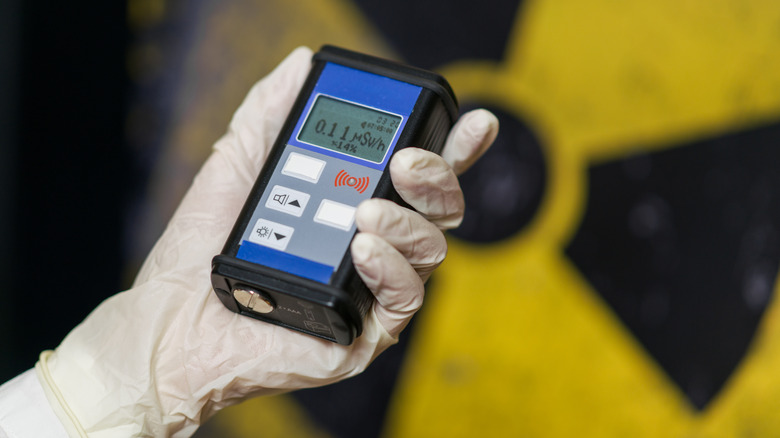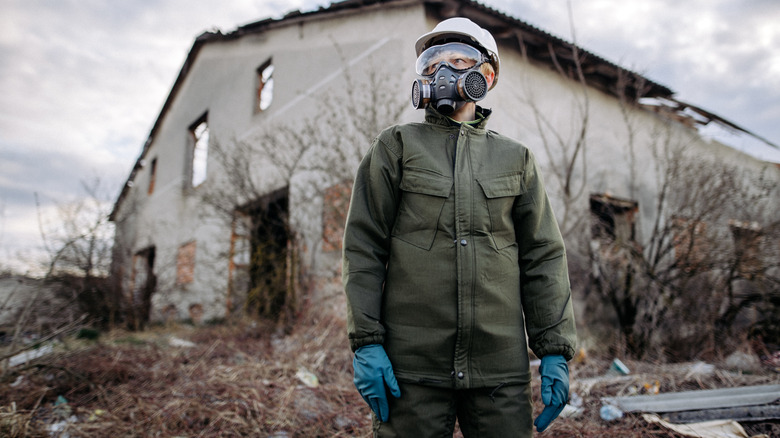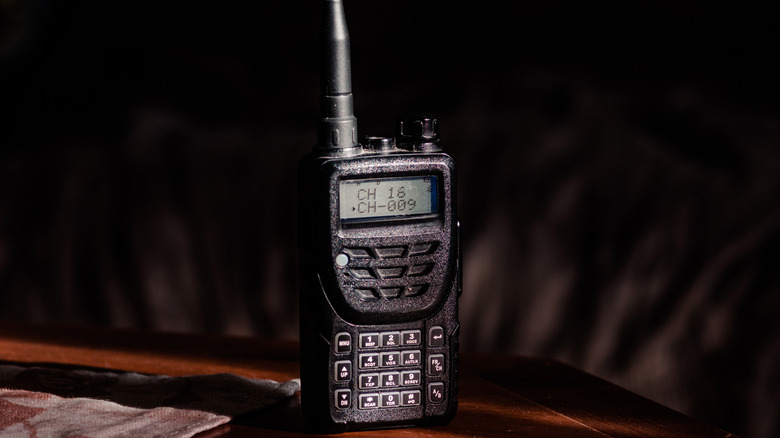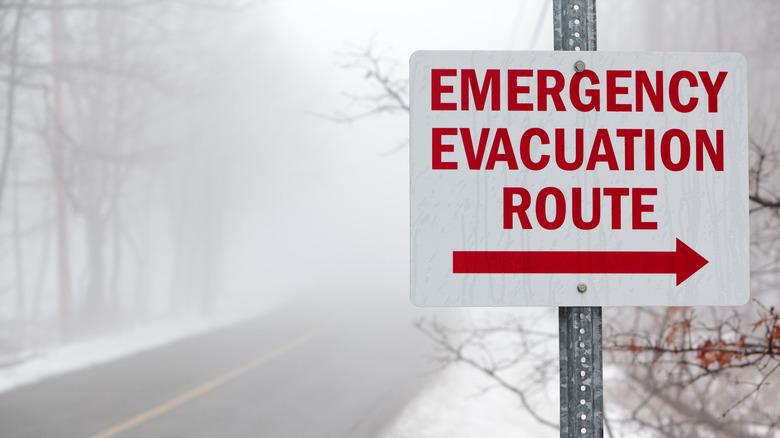How To Survive A Nuclear Bomb: 10 Things You Need To Know
Nuclear bombs are universally feared for their catastrophic power and the long-lasting consequences they can inflict. At ground zero, buildings can be obliterated, causing massive loss of life, while the shockwave that follows will spread radioactive particles throughout the surrounding environment. The release of high levels of radiation will contaminate areas far beyond the blast site, potentially causing acute radiation sickness or long-term health complications to those exposed. For this reason, surviving the initial nuclear attack is just as important as staying alive thereafter and in the days that follow.
Here, we will discuss how to survive a nuclear bomb and the 10 most important things you need to know. This will include reacting to the nuclear blast itself, as well as important survival skills you will need to employ to increase your chances of staying healthy until help arrives. We have also included various lists of medical, food, water, and equipment supplies that will get you through the hardest days. Knowing how to identify the safest courses of action, as well as the potential hazards can be the difference between life and death.
Whether you're simply inquisitive or a dedicated doomsday prepper, here are 10 things you need to know to survive a nuclear bomb.
Preparation is key
When facing the threat of a nuclear bomb, preparation is key. The first step is understanding the nature of a nuclear bomb and its inherent dangers. A nuclear bomb is a highly destructive weapon that releases a vast amount of energy in the form of blasts, heat, and radiation. Your emergency kit, supplies, and disaster plan should cater to these circumstances.
First off, you should always have a first aid kit at hand that include all the basics, such as bandages, aspirin, antiseptic wipes, and potassium iodide tablets. If members of your family are on prescription medications, you should have at least a seven-day reserve stored away.
Water and food will likely be your most important asset since you won't be able to go outside for a while. Generally, a minimum of one gallon of water should be allocated to each person per day, with a total supply of up to two weeks if possible. Bottled water and giant air-tight barrels will work best. Food must be non-perishable, easy to prepare, and sealed. Again, a two-week supply would be best, with canned foods taking priority.
Additional supplies you should store away include a fresh change of clothes, a flashlight with batteries, personal hygiene and sanitation items, a radio, a multi-purpose tool, blankets, and extra cash. To pull this all together, create a disaster plan with your friends or family. Discuss where you will meet, what you should do, and the responsibilities of each person.
A short time to react
In the terrifying moments before and immediately after a nuclear blast, knowing how to react is crucial for maximizing your chances of survival. Several factors and considerations should be kept in mind as you navigate the aftermath of this catastrophic event.
In the best possible circumstance, you might find yourself indoors already as an emergency broadcast warns you that a nuclear event has occurred. Sit tight, don't go near the windows, and move away from objects that might fall. If you find yourself outside, you might see the explosion firsthand — this is usually a flash of light followed by a mushroom-shaped cloud rising from the sky. Lie face down to protect exposed skin from heat and flying debris, and when the shockwave passes, get inside the nearest building as quickly as possible. Whatever you do, though, never look at the flash or fireball. It can blind you.
After detonation, you'll likely have 10-ish minutes to find a better shelter or activate your disaster plan before fallout arrives. Nuclear fallout is the minute radioactive particles that descend slowly from the atmosphere after a nuclear blast. If your disaster plan involves getting to a specific location, cover your mouth and nose with a mask, cloth, or towel while you're outside. This may lower the amount of harmful particles you breathe in. That said, where you go and the type of shelter you find will determine if you stay alive for the hours and days that follow.
Shelter types matter
Most shelters cannot provide complete protection from a nuclear bomb, but choosing the best available option can increase your chance of survival. Factors to consider when choosing a shelter include the distance from the blast site, structural strength, shielding materials, and the ability to seal off openings. The aim is to reduce exposure to the initial blast effects, block radioactive fallout, and restrict external radiation exposure.
Here are some of the best shelter types:
- Purpose-built fallout shelters: These shelters are specifically designed to withstand a nuclear bomb or the effects that follow. They are often reinforced with materials such as concrete, wood, soil, rock, or steel. Ask officials in your city whether they have purpose-built nuclear fallout shelters.
- Underground shelters: For most of us, the best recommendation would be to go as far below ground as possible. Underground shelters such as basements, tunnels, or subways can offer protection against the initial blast, as well as nuclear fallout, heat, and falling debris. If you find yourself in a mountainous area, seek out locations that are deep inside a tunnel or cave system.
- Concrete and brick structures: Buildings that are made from reinforced concrete or bricks are strong and dense, which may help absorb the force of the explosion and protect from radioactive fallout. You can minimize the risk of flying debris and radioactive particles by ensuring you are in a windowless room that can be sealed once inside.
Choose a shelter based on your current situation and available resources. The further you are away from the blast site, and the stronger or more shielded your shelter, the better.
You might be radioactive
Nuclear danger does not end once you have found a suitable shelter. If you were outside during the initial blast and the following shockwave, you might have radioactive particles on your clothes. These particles can emit radiation and pose a significant health hazard to different areas of your body and those around you.
As soon as you're inside, carefully remove the outer layer of your clothing while being mindful not to shake any radioactive dust loose. Avoid touching your mouth, nose, and eyes in this process. Removing your outer layer of clothing can reduce up to 90% of radioactive materials while minimizing the risk of skin irritation, burns, or other radiation-related skin conditions.
Depending on the amount of water you have, or the facilities that are available, you should try to wash with soap and water to remove any radioactive particles from skin or hair that wasn't covered. Alternatively, you can opt for a clean wet cloth if water is scarce. Note that hand sanitizer does not remove or protect against radioactive particles.
If you have pets, you'll want to clean them if they were outside after the radioactive dust arrived. Gently brush their coat and wash them with soap and water. Once you have changed into new clothes, you should then try to seal the shelter as best as you can. Close all the windows, doors, and vents to minimize radioactive particles coming in. Additionally, turn off air conditioners and shut fireplace dampers.
Expect to stay inside for at least 24 hours
Unless informed otherwise by authorities, you should always stay inside your shelter for at least 24 hours. This is because radiation levels are extremely hazardous after a nuclear explosion and only become less dangerous after a few hours or days. Without access to immediate healthcare or psychological counseling, you should treat wounds, medicate, and support those around you.
For minor cuts, you can use your first aid kit to stop the bleeding. Follow these steps:
- Washing your hands first with soap and water.
- Cleaning the wound with lukewarm water and a mild soap or cleanser.
- Applying pressure to the cut with a washcloth or gauze to control bleeding.
- Applying petroleum jelly continuously.
- Covering the cut with a sterile bandage and changing it daily.
- Taking pain medication where necessary.
With minor burns, follow a similar process:
- Cool the burn with cold water or apply cold compresses for 10 minutes.
- Apply petroleum jelly two to three times a day.
- Cover the burn with a sterile bandage.
- Take pain medication where necessary.
If you have purchased potassium iodide tablets beforehand and stored them in your first aid kit, you can now take them to protect your thyroid gland from radioactive iodine. Last but not least, don't forget to maintain a positive mindset and support those around you emotionally. Try to engage in stress-reducing activities for your psychological well-being.
Sealed food and bottled water
After a nuclear bomb has been detonated, certain precautions should be taken regarding the food you eat and the water you drink due to the potential for contamination. You should always avoid food and water that has been directly exposed to radioactive fallout until authorities tell you it is safe. Common examples include fresh produce such as fruit or vegetables grown outdoors and unsealed or unpackaged foods indoors. The same goes for water. Open bodies of water and wells should be off-limits.
Food and water that have not been exposed to contamination is a necessity. If you managed to prepare for the blast beforehand, non-perishable food items would be ideal as they do not require refrigeration. Canned goods, packaged snacks, and powdered milk are all excellent options. As for drinking water, stored or bottled water should be your only choice.
Note that sealed food and bottled water from the outside can be consumed if properly cleaned. If you pick up a few items before heading into your shelter, you can wipe them with a damp cloth or towel to remove radioactive particles. Just make sure you put the cloth or towels in a plastic bag after and place it far away from people. It's also worth mentioning that rationing your sealed food and bottled water is important. If you're unsure when you'll be able to leave your shelter, stretching meals out will become paramount to your survival long term.
Radiation monitoring devices
Monitoring radiation levels is a routine task that can help you maintain the safety of your shelter. This is because radioactive fallout can still get inside despite closing windows, doors, vents, and other openings. The goal is to therefore catch any increases in radiation before they become unknowingly hazardous to your health.
The easiest way to keep track of radiation levels is by using a device such as a Geiger counter or handheld radiation detector. These devices can detect and measure radiation levels in your shelter while also providing real-time readings or an audible click to warn users of the intensity of the radiation. Geiger counters and portable radiation detectors are often easy to operate, but users should always consult the manufacturer's instructions beforehand to know what radiation levels are considered hazardous and how to get the most accurate reading.
If your monitoring device indicates dangerously high levels of radiation, there are a few things you can do before deciding to move to another location. First, move to an internal room that has the least exposure to the outside environment. This might be the middle room of a concrete house with a single door and no windows. If that is not possible, try to create a more effective barrier for your windows, doors, and entry points. Ducktape, plastic sheets, and blankets used to cover small gaps can decrease the chances of radioactive particles getting inside. Finally, try to minimize contact with radioactive surfaces that are highly contaminated.
Going outside for short periods
While you should remain indoors for at least 24 hours after a nuclear explosion, there may be an emergency that requires you to go outside for a short period of time. Since nuclear fallout might rain from the sky for about a week, it's crucial to wear the appropriate protective gear to minimize your exposure to radioactive particles.
Heavy clothing can provide a barrier against radioactive particles. Coats, long-sleeved shirts, long pants, and thick socks might be your best options to cover as much skin as possible. Since your feet and hands will be making contact with contaminated objects outside opt for closed-toe shoes and thick gloves made from leather or rubber. A mask or respirator can be used to filter out small particles, including dust or smoke. A hat and goggles may provide added protection.
Unfortunately, we might not have all the clothing items listed above. If you're making an emergency exit, you should prioritize covering your mouth and nose with a damp cloth when you're outside. Above all, you should ensure that you don't have any exposed wounds that radioactive particles can quickly get into. If it means wrapping a shirt around your leg before leaving, do it!
Remember that when you get back inside, the clothing you used to go outside with should be sealed in a bag and placed far away. Do not attempt to wear it again. Finally, remember to clean yourself with soap and water.
Emergency communications may not work
The availability and functionality of emergency communication systems may be impacted by the effects of a nuclear blast. This may be because the infrastructure has been damaged or an electromagnetic pulse (EMP) has short-circuited electronic equipment. For that reason, it's advisable to have multiple communication devices at hand so you can receive updates from both government officials while also being able to liaise with relatives and friends nearby.
Government agencies will try to communicate with citizens using Emergency Alert Systems (EAS), Wireless Emergency Alerts (WEA), public address systems, the internet, and emergency services. Emergency Alert Systems are emergency messages broadcasted through televisions, radios, and cable systems but are vulnerable to an EMP. Wireless Emergency Alerts use cell towers to broadcast messages, but structural damage may take them out. Public address systems, such as a loudspeaker operated by a battery, may be utilized. The internet also relies on the stability of mobile networks. This makes the most reliable option to wait for emergency responders.
That said, communication options might not be entirely gone if the electricity is out and there is structural damage. Battery-powered radios and walkie-talkies might still be able to receive emergency alerts and communicate with others close by. Backup power sources or hand-crank chargers may also be able to keep these devices active as you wait for help.
The evacuation procedure
Once an evacuation procedure is implemented, instructions will be communicated by government agencies through one of the methods discussed above. These instructions may include evacuation routes or assembly points based on the severity of the nuclear blast. These safe zones are areas that authorities deem less vulnerable to the nuclear blast effects and subsequent fallout. Transportation services, such as buses and other vehicles, may be provided to get you there as quickly as possible. When you arrive at the evacuation center or assembly point, check in with authorities to receive medical support and essential items.
It's important to follow evacuation orders promptly to increase your chances of survival. Gather emergency supplies, but be prepared for authorities to tell you to leave them behind. Since the risk of contamination will still be high, you may not be able to bring personal belongings with you. With that said, you should also not return to the affected area until you've been told it's safe to do so. Radiation can linger for a long period of time and may still be an ongoing hazard to your health. Additionally, until infrastructure has been repaired, roads and buildings will continue to be unsafe for habitation.
Eventually, authorities will conduct assessments of the affected area and may initiate decontamination and cleanup operations to remove radioactive particles and mitigate hazards. Professional teams or volunteers will be deployed for these specialized tasks. After the area has been successfully secured, you may then return to your home.
